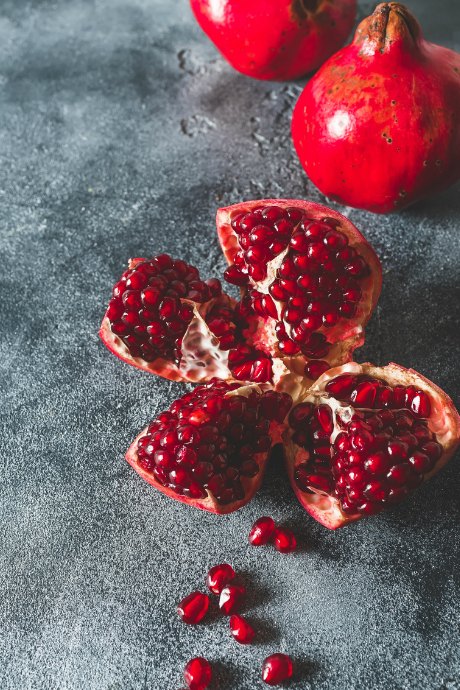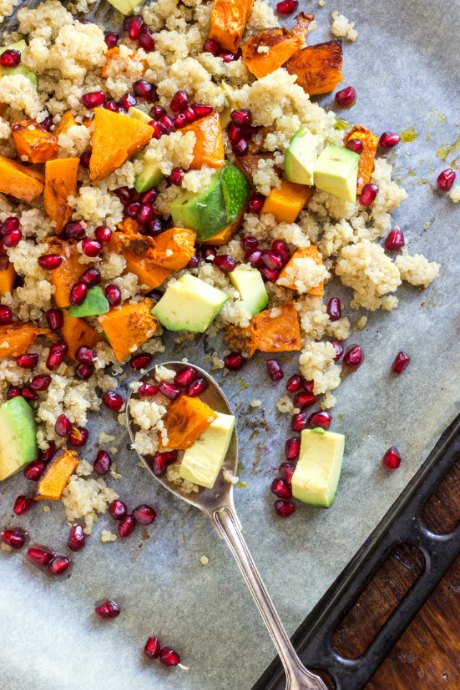The Hidden Jewels of Pomegranates
Posted by Julie on Nov 29th 2018
Have pomegranates ever seemed to you like they're too much trouble? They're only available for a few months, they're on the pricey side, and it takes a lot of work to get to those edible shiny seeds.
All of that is true. However, we think they're worth the effort. Keep reading to learn how to choose and store this fruit, the smartest ways to get to those juicy arils, and all the ways those seeds go with sweet and savory dishes.
Get Them Before They’re Gone
Pomegranate season is short, whether you’re in the northern or southern hemisphere. These fruits are native to the Middle East, but they grow in warm and relatively dry areas of the US, including California, Texas, and Arizona. Be prepared to find them at the grocery store during the fall months. They will start to disappear in January.

Even while they’re in season, pomegranates are one of the more expensive items in the produce section. This is especially true when you consider the edible portion is limited to the seeds.
How to Choose a Pomegranate
Pomegranates do not continue to ripen after they’ve been picked. Look for fruits that feel heavy for their size, which indicates you’ll find plump, juicy arils inside. It may or may not matter to you if the fruit is blemished or bruised. However, Martha Stewart cautions against soft spots or cracks. You’ll also want to avoid fruit that looks like it's starting to dry out.
Once you get them home, an airtight bag will keep them fresh for weeks in the refrigerator. We suggest transferring them from the grocery store plastic produce bag to a zip-top plastic bag. You can also refrigerate the arils, but they dry out quickly. Better to wait until you are ready to eat them before sectioning and seeding them. This fruit is too expensive to let it go to waste.
The Arils Are Worth the Effort
The good parts are on the inside, and it will take some work to get to them. The Pomegranate Council offers three ways to seed a pomegranate. The first option might look the easiest — submerging sections in a bowl of water to loosen and remove arils — but other sources caution against this method. The Spruce warns that you’ll end up with soggy seeds.

Instead, try scoring and sectioning your fruit. Pull the sections apart, and turn them inside out to release the arils. You may need to do a bit of manual work to separate the seeds from the bitter pith. We recommend outsourcing this work to kids if possible. Just don’t be surprised if they snack on the arils while they work.
In fact, you can feel really good about pomegranates as a nutritious snack. They are packed with Vitamins C and K, as well as potassium and antioxidants. Plus, even though they contain quite a bit of sugar, the fiber content is also comparatively high. That's one reason we’re in favor of eating the arils rather than juicing them. Plus, Bon Appetit compares arils to Fruit Gushers, without the high-fructose corn syrup or artificial red dye.
Pomegranates Go With Everything
While pomegranates may have a short season, you can get your fill by adding them to nearly everything you eat. Toss them in salads, sprinkle them over yogurt or smoothie bowls, and incorporate them in salsa or relish for meat dishes.

Over the years, we’ve featured a variety of recipes that include this fruit, such as:
Of course, there are always new recipes to be found, so we have a few additional suggestions to try -- all courtesy of Martha Stewart. This citrus salad is the most beautiful winter fruit salad we’ve seen. We also want to try this recipe for roasted vegetables accented by vinaigrette and arils. It's too late for Thanksgiving, but keep it in mind for Christmas dinner or another family gathering. Finally, try brewing tea, made right from fresh fruit on your stovetop.

